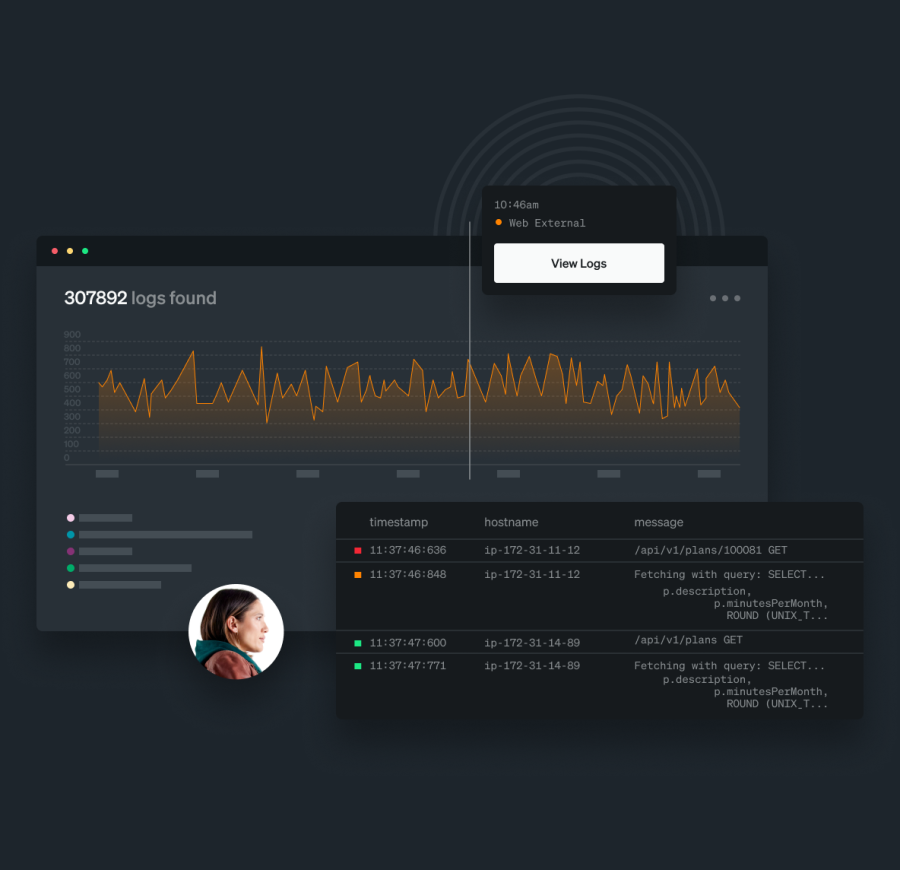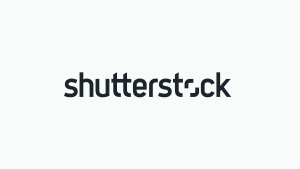The next evolution in log analysis
Fast, trouble-free troubleshooting
- Pinpoint root causes swiftly using AI-driven insights for faster resolution
- Resolve incidents effectively with JOINs and lookups, streamlining complex queries
- Dive into log data effortlessly; volumes of logs analyzed with a single click
- Gain clear data summaries that enhance understanding and speed up issue resolution

Simple to set up, easy to use
- Easily ingest log data from anywhere using New Relic’s log forwarder
- Configure APM and infrastructure agents to get in-context logs alongside other telemetry data
- Use open source tools from Fluentd, Fluent Bit, and Logstash, and integrations with AWS, Azure, and more
- Go agentless and forward syslog data to New Relic’s TCP endpoint


Speed and Scale for instant answers
- Search responses in seconds without any need for data indexing
- Segment data precisely using flexible, user-defined partitioning
- Search, filter, pivot, and save rich queries for instant re-use and alerting
Eliminate cold storage hassles with compliance queries at 1/4 the cost of others
- Analyze compliance logs swiftly for rapid insights with your other logs
- Avoid rehydrating, reloading, re-indexing, or moving data across tiers
- Forget charges for data handling, formatting, or extra log tools
- Store logs for up to seven years, fully active and enriched

See why customers love New Relic log management.
has us open.
Log Management FAQs
New Relic AI-powered log management provides instant insight across the enterprise from applications, infrastructure, and devices for immediate analysis, resulting in faster troubleshooting and mean time to resolution (MTTR). The user-friendly interface allows you to create alerts, workflows, and intuitive, dynamic dashboards, as well as reduce manual processes and errors through automation, AI, and contextualization.
When selecting a log management solution, certain capabilities are essential for transforming data into meaningful insights. The right log manager software should enhance both operational visibility and security while meeting the following criteria:
- Scalability: Your system demands will grow, and your log manager should be able to grow with you. New Relic’s architecture efficiently processes petabytes of data while maintaining query speed.
- Real-time log monitoring: Detect issues instantly with continuous monitoring capabilities that alert you to anomalies as they happen. New Relic's intuitive dashboards visualize real-time log data, enabling immediate issue identification before user experience suffers.
- AI and automation: Let machines do the repetitive work of parsing and analyzing logs so your engineers can focus on solving complex problems. New Relic’s AI assistant can explain errors, provide troubleshooting steps, and allows natural language queries across all telemetry data.
- Security and compliance: Meet stringent regulatory requirements with robust retention policies and access controls. New Relic offers end-to-end "ingest to archive" capabilities that maintain compliance while keeping logs accessible for investigations.
- Integration: The best system log manager works seamlessly with your existing tech stack. New Relic’s logging and monitoring tools integrate with popular log collectors and major cloud providers for full-stack visibility.
AI has fundamentally changed log management from a reactive task to a proactive practice that transforms raw data into actionable intelligence. New Relic’s AI-powered log monitoring tools analyze patterns across billions of data points to identify potential issues before they become critical problems.
By integrating machine learning with log analysis, New Relic automatically identifies significant deviations from established baselines without requiring manual rule creation. The system continuously improves its understanding of your specific environment, reducing noise and highlighting only what matters. This intelligence extends to query performance as well, where AI optimizes searches based on your historical patterns to make your log management software more efficient with each interaction.
AI transforms troubleshooting by connecting disparate signals across your entire stack. When incidents occur, New Relic’s AI assistant provides detailed context by correlating logs with metrics, traces, and events to pinpoint root causes. Unlike basic log monitoring software that merely collects data, New Relic’s AI interprets complex relationships between components, explaining not just what happened but why—and suggesting specific remediation steps your team can implement immediately.
New Relic log management is a fully integrated solution of the overall Intelligent Observability Platform. You can see our dedication to using AI to resolve our customers’ challenges throughout our core product, and it’s embedded in our user experience. Other vendors—such as Datadog—use separate chatbots. New Relic provides end-to-end “ingest to archive” log management, which includes retention rules for compliance. New Relic keeps the developer, engineer, and log practitioner in mind as evidenced by our functionality, architecture, and affordability.
While often used interchangeably, log management and log monitoring serve distinct yet complementary purposes in maintaining system health and security.
What is log management, then? It’s the comprehensive process of collecting, centralizing, storing, parsing, and analyzing log data to ensure logs are properly organized and retained according to your specifications and compliance requirements. This is the foundation that makes all other log-related activities possible.
On the other hand, log monitoring is the active, ongoing process of watching log data in real-time to detect issues, anomalies, and security threats as they emerge. It focuses on alerting teams when predefined conditions are met, enabling rapid response to potential problems. Effective monitoring depends on properly configured alerts and visualization tools that can surface meaningful signals from the noise.
New Relic seamlessly integrates both capabilities: Our platform combines comprehensive log management with sophisticated log monitoring tools, providing complete visibility across your technology stack. This unified approach eliminates the need to switch between different systems—you can collect, store, analyze, and monitor all of your logs from a single interface.
- AI monitoring readiness: Utilizes GenAI and key algorithms with logs, metrics, and traces to accelerate analysis and improve data quality and system intercompatibility.
- Security monitoring: Use log data to detect and investigate security incidents.
- Incident response: Analyze your logs to investigate and respond to issues and quickly identify the root cause.
- Troubleshooting and debugging: Analyze your logs in order to identify current application errors, bottlenecks, and software bugs.
- Performance monitoring: Monitor system performance by analyzing log data to identify utilization patterns and anomalies that may potentially impact the health and responsiveness of your system.
- Application monitoring: Keep track of application-specific logs in order to gain essential insights into user interactions and performance metrics.
- Business intelligence: Extract key business insights from logs to identify trends and better understand your users and their behaviors.
Monitoring system logs requires a good understanding of the system and the logs that are generated by it. Additionally, it's important to have accurate, real-time data to interpret the logs and take action based on everything that happens in your application, network, or server.
New Relic log management can help you monitor system logs quickly, easily, and all in one place. Reduce your workload by having all of your system logs correlated to curated content across your entire stack with real-time monitoring and in-depth troubleshooting.
New Relic’s logging best practices include:
• Anticipate common scenarios.
• Log meaningful messages for valuable context.
• Keep logs simple and concise to capture only the most critical information.
• Don’t forget to timestamp.
• Use a log format with consistent structure for meaningful parsing.
Setting up and deploying New Relic logs is simple and automated. Define which logs you want to send and from which source, and then leverage one of our multitude of paths to bring logs into New Relic databases.




